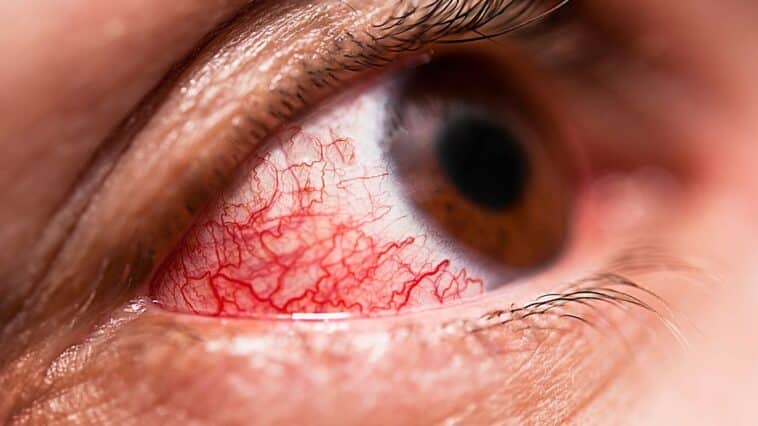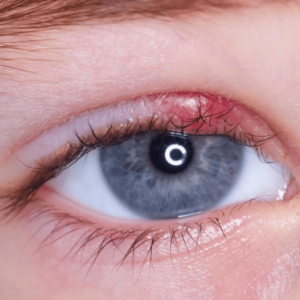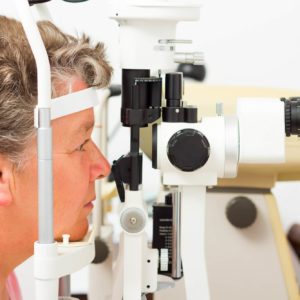What is Conjunctivitis?
Conjunctivitis is a medical condition characterized by the inflammation of the conjunctiva, the thin transparent layer of tissue that covers the white part of the eye and the inner surface of the eyelids.
This condition results in redness, itching, discharge, and other symptoms. Various factors, such as viral or bacterial infections, allergies, irritants, and other underlying medical conditions, can cause it.
What are the Symptoms of Conjunctivitis?
The symptoms of conjunctivitis can include:
- Redness in the eye(s)
- Itching or burning sensation in the eye(s)
- Increased tearing or discharge from the eye(s)
- Swelling of the conjunctiva
- A gritty or scratchy feeling in the eye(s)
- Light sensitivity
- Sticky or crusty eyelids upon waking
- Blurred vision (in severe cases)
See an ophthalmologist if you experience changes in your vision or have persistent conjunctivitis symptoms.
What are the Causes of Conjunctivitis?
Many factors can cause conjunctivitis, including:
Infections:
a. Bacterial conjunctivitis: This type of conjunctivitis is caused by bacteria such as Staphylococcus aureus or Streptococcus pneumoniae and is usually associated with discharge, redness, and swelling of the eye. Bacterial conjunctivitis can be treated with antibiotics.
b. Viral conjunctivitis: This type of conjunctivitis is caused by a viral infection and is usually associated with a watery discharge, redness, and itching. Viral conjunctivitis often resolves independently, but antiviral medication may be prescribed to speed up the healing process.
c. Chlamydia conjunctivitis: This type of conjunctivitis is caused by the bacterium Chlamydia trachomatis and is typically associated with a watery discharge, redness, and swelling of the eye. Chlamydia conjunctivitis can be treated with antibiotics.
Allergies: Conjunctivitis can also be caused by an allergic reaction to pollen, animal dander, dust mites, or other allergens. Allergic conjunctivitis typically causes redness, itching, and swelling of the eye. Treatment typically involves avoiding allergens and using anti-inflammatory medication to relieve symptoms.
Irritants: Exposure to irritants such as chlorine, smoke, or air pollution can cause conjunctivitis, which is characterized by redness, itching, and tearing of the eye.
Physical trauma: Conjunctivitis can also occur due to physical trauma, such as a foreign body in the eye or a chemical burn.
Autoimmune disorders: In rare cases, conjunctivitis can be a symptom of an underlying autoimmune disorder, such as rheumatoid arthritis or lupus.
See an eye doctor if you have symptoms of conjunctivitis, as early diagnosis and treatment can help prevent the spread of infection and avoid complications. An eye doctor will perform a comprehensive eye exam and consider the patient’s symptoms, medical history, and risk factors to determine the condition’s underlying cause and provide the appropriate treatment.
Diagnosing Conjunctivitis
Diagnosing conjunctivitis typically involves a physical examination of the eyes, including a thorough evaluation of the symptoms and, sometimes, laboratory tests.
The doctor may ask about the symptoms and medical history, including any recent eye injuries or infections, exposure to irritants or allergens, and use of contact lenses.
During the physical examination, the doctor will examine the eyes for signs of redness, swelling, discharge, and other abnormalities. They may use a bright light to check the inside of the eye for any signs of infection or inflammation. They may also check for any signs of a foreign body in the eye and any damage to the cornea.
In some cases, the doctor may take a sample of the discharge from the eye for laboratory analysis to determine the cause of conjunctivitis. This can help to determine if a bacterial, viral, or allergic reaction causes conjunctivitis.
Based on the examination and laboratory results, the doctor can diagnose the type of conjunctivitis and provide appropriate treatment. Treatment for conjunctivitis may include antibiotics, antiviral medication, or anti-inflammatory eye drops, depending on the condition’s cause.
See an eye doctor if you have symptoms of conjunctivitis, as prompt treatment can help prevent the spread of infection and avoid complications.
How Do You Treat Conjunctivitis?
The treatment of conjunctivitis depends on the underlying cause of the condition. Some common treatments include:
- Antibiotic eye drops or ointments: If a bacterial infection causes conjunctivitis, antibiotics can kill the bacteria and reduce the symptoms.
- Antiviral medication: If a viral infection causes conjunctivitis, antiviral medication may help reduce the symptoms and speed up the healing process.
- Anti-inflammatory eye drops: For conjunctivitis caused by an allergic reaction, anti-inflammatory eye drops can reduce swelling and itching.
- Artificial tears: For dry eye conjunctivitis, artificial tears can lubricate the eyes and relieve symptoms.
- Avoiding irritants: To reduce the spread of infection, it’s essential to avoid contact with the eyes and not to share items such as towels, pillows, and makeup. If possible, keep these items separate from other household members.
It’s essential to follow the doctor’s instructions and finish the full course of medication as prescribed, even if the symptoms improve before the medication is finished.
In some cases, conjunctivitis may resolve on its own without treatment. However, seeing an eye doctor for a proper diagnosis and ensuring that any underlying condition is treated correctly is essential.
Tips for Prevention of Conjunctivitis
Here are some tips for preventing conjunctivitis:
- Wash your hands regularly: Regular hand washing is one of the most effective ways to prevent the spread of conjunctivitis. Wash your hands frequently with soap and water, especially before touching your eyes.
- Avoid sharing personal items: Avoid sharing personal items such as towels, pillows, and eye makeup, as they can spread the infection.
- Remove contact lenses: If you wear contact lenses, remove them and switch to glasses until your conjunctivitis has cleared up to prevent the spread of infection.
- Disinfect contact lenses: If you wear contact lenses, make sure to disinfect them properly and replace them regularly to prevent the spread of infection.
- Avoid touching your eyes: Touching your eyes can spread infection from your hands to your eyes. Avoid touching or rubbing your eyes, especially if your hands are not clean.
- Stay away from irritants: Avoid exposing your eyes to irritants such as smoke, dust, and chemicals, as these can make conjunctivitis symptoms worse.
- Avoid close contact with infected individuals: If someone you know has conjunctivitis, avoid close contact with them until their symptoms have cleared up to prevent the spread of infection.
By following these prevention tips, you can help to reduce your risk of getting conjunctivitis and prevent the spread of infection to others.
Can Conjunctivitis Go Away By Itself?
Conjunctivitis can go away on its own in some cases, especially if a viral infection causes it. Viral conjunctivitis often resolves within 7 to 14 days without treatment. However, it is still essential to see an eye doctor for a proper diagnosis and to rule out any underlying conditions that may require treatment.
In some cases, conjunctivitis caused by a bacterial infection may resolve independently, but it is more likely to persist and potentially worsen without treatment. Bacterial conjunctivitis can also spread to other individuals and cause complications if left untreated.
It’s essential to see an eye doctor for a proper diagnosis and to ensure that any underlying condition is treated correctly, even if conjunctivitis appears to be resolving on its own. In some cases, antibiotic or antiviral medication may be necessary to speed up the healing process and prevent the spread of infection.
Conjunctivitis Complication
In some cases, conjunctivitis can lead to complications, such as:
- Corneal ulcer: A corneal ulcer is a break in the clear outer layer of the eye that can occur as a result of a bacterial or viral infection. This can cause pain, redness, and decreased vision.
- Scarring: Conjunctivitis can cause scarring of the conjunctiva, which can lead to a permanent decrease in vision.
- Spread of infection: Conjunctivitis can spread from one eye to another and spread to other individuals, particularly if a contagious virus or bacteria causes the infection.
- Allergic reactions: In some cases, conjunctivitis can trigger an allergic reaction, causing red, itchy eyes and swelling.
- Chronic conjunctivitis: Conjunctivitis can become chronic if it is not treated correctly or if the underlying cause is not addressed. This can lead to persistent redness, itching, and discharge, affecting vision and quality of life.
It’s essential to see an eye doctor if you have symptoms of conjunctivitis to prevent the spread of infection and avoid complications. Prompt treatment can help to speed up the healing process and reduce the risk of long-term complications.
When To See an Eye Doctor
You should see an eye doctor if you have any of the following symptoms:
- Red, swollen, or itchy eyes
- Increased tear production or eye discharge
- Sensitivity to light
- Blurred or decreased vision
- Pain or discomfort in the eyes
- The feeling of a foreign body in the eye
- A persistent or worsening eye infection
Early diagnosis and treatment are essential to prevent the spread of infection and to avoid complications. An eye doctor can perform a comprehensive eye exam, determine the underlying cause of your symptoms, and provide the appropriate treatment to manage your conjunctivitis.
Summary
Conjunctivitis is a common eye condition characterized by redness, swelling, and discharge. It can be caused by viral, bacterial, or allergic causes and can be highly contagious.
An eye doctor will perform a comprehensive eye exam to diagnose conjunctivitis and consider the patient’s symptoms, medical history, and risk factors. Treatment will depend on the underlying cause of the condition and may include antibiotics, antivirals, or anti-inflammatory medication.
It is crucial to practice good hygiene, avoid sharing personal items, and stay away from infected individuals To prevent the spread of conjunctivitis.
If you have conjunctivitis symptoms, you must see an eye doctor promptly to ensure prompt treatment and prevent complications.






